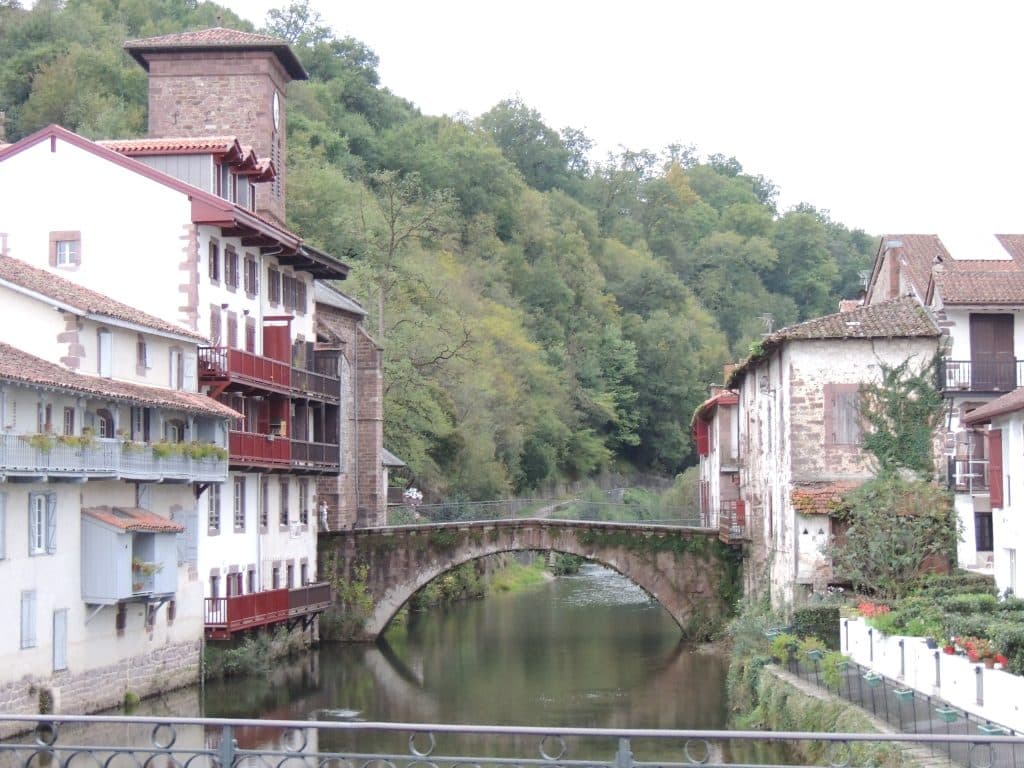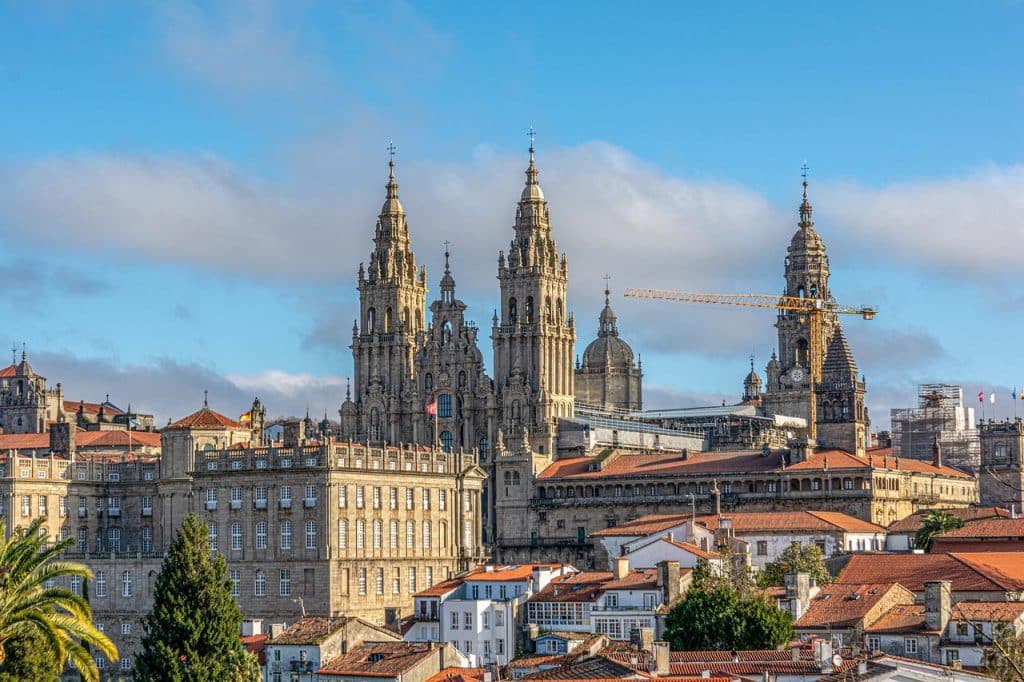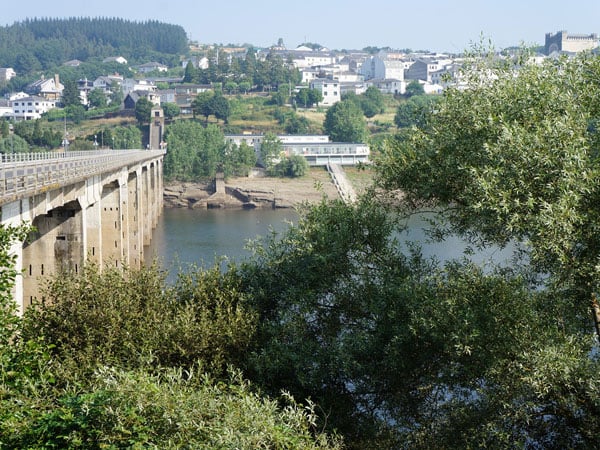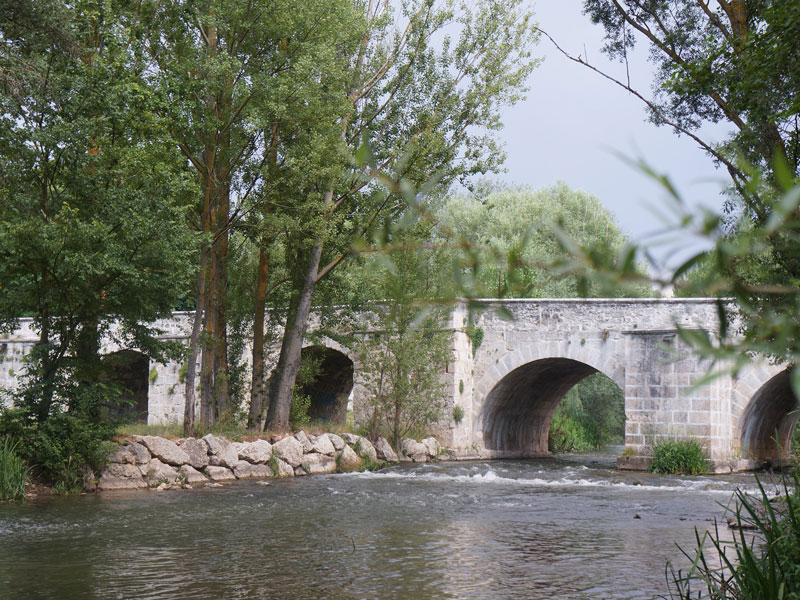The Camino Francés, a revered route of the Camino de Santiago pilgrimage, is a journey that captures the imagination of thousands of walkers every year. Its blend of cultural richness, historical significance, and physical challenge makes it a unique experience. But ‘how difficult is the Camino Francés?‘
In this article, we delve into the aspects that determine its difficulty, providing insights for those planning to embark on this remarkable journey.
Understanding the Camino Francés
The Camino Frances, often simply called the French Way, starts in Saint-Jean-Pied-de-Port in France and spans about 780 kilometres to Santiago de Compostela in Spain. This route traverses diverse landscapes, including mountains, rolling hills, and flat plains, offering a variety of terrains to its travellers. Many pilgrims opt to undertake the last 100km of the Camino Francés from Sarria to Santiago, which takes just 7 days and allows you to visit the famous market towns of Portomarin, Melide and Arzua. As you will have completed over 100km, you will be eligible to receive the famous Compostela pilgrim certificate from the Pilgrim’s Office when you arrive in Santiago.
Historical and Cultural Significance
Rich in history, the Camino Frances is more than just a walk. It’s a journey through time, offering a glimpse into the medieval pilgrimage tradition. Along the way, walkers encounter historic sites, ancient churches, and picturesque villages, each with its unique story.

Assessing the Difficulty Level of the Camino Francés
Physical Demands
The physical challenge of the Camino Frances varies. The initial stages in the Pyrenees are demanding, with steep ascents and descents. However, as the path progresses into the Meseta (central plateau of Spain), the terrain becomes flatter and easier to navigate.
Key Stages and Their Challenges
The Pyrenees Crossing: The first stage from Saint-Jean-Pied-de-Port to Roncesvalles is arguably the toughest, with a steep climb and descent.
The Meseta: This long stretch of flat terrain can be physically less demanding but mentally challenging due to its monotony and open exposure to weather elements.
Galicia: The final part of the journey, leading into Santiago, presents a series of rolling hills.

Weather Conditions
The weather plays a significant role in the Camino’s difficulty. The best times to walk are during Spring and Autumn when the weather is milder. Summers can be hot, especially in the Meseta, making hydration and sun protection crucial. Conversely, Winters can be cold and some parts of the route may be inaccessible due to snow.
Mental and Emotional Aspects
Solitude vs Community
While physically challenging, the Camino is also a mental and emotional journey. Some find the long hours of walking therapeutic and a chance for introspection, while others enjoy the sense of community and camaraderie amongst fellow pilgrims.
Overcoming Challenges
The journey teaches resilience and determination. Dealing with physical discomfort, fatigue, and unexpected obstacles is part of the experience, contributing to the sense of achievement upon reaching Santiago de Compostela.

Preparation Tips
Physical Preparation
Check out our blog on ‘How do you train to walk the Camino’ for an in-depth approach. We have also compiled a Camino Fitness eBook which offers free workout routines, useful exercises and a step-by-step workout plan for your next walking adventure.
Start Training Early: Gradually increase your walking distance weeks before your trip.
Simulate the Conditions: Train with the backpack you intend to carry and wear the shoes you plan to use.
Mental Preparation
Set Realistic Expectations: Understand that there will be challenging days.
Embrace the Experience: Be open to the journey’s highs and lows.
Ultimately, how difficult the Camino Frances is, is subjective and varies based on physical fitness, mental preparedness, and personal expectations. It’s a journey that tests and rewards in equal measure, offering a unique experience that leaves a lasting impression on those who walk its path. Whether you seek spiritual growth, physical challenge, or cultural exploration, the Camino Frances offers a rich tapestry of experiences waiting to be discovered.
For more information about the Camino de Santiago routes or to book your trip, contact us.
